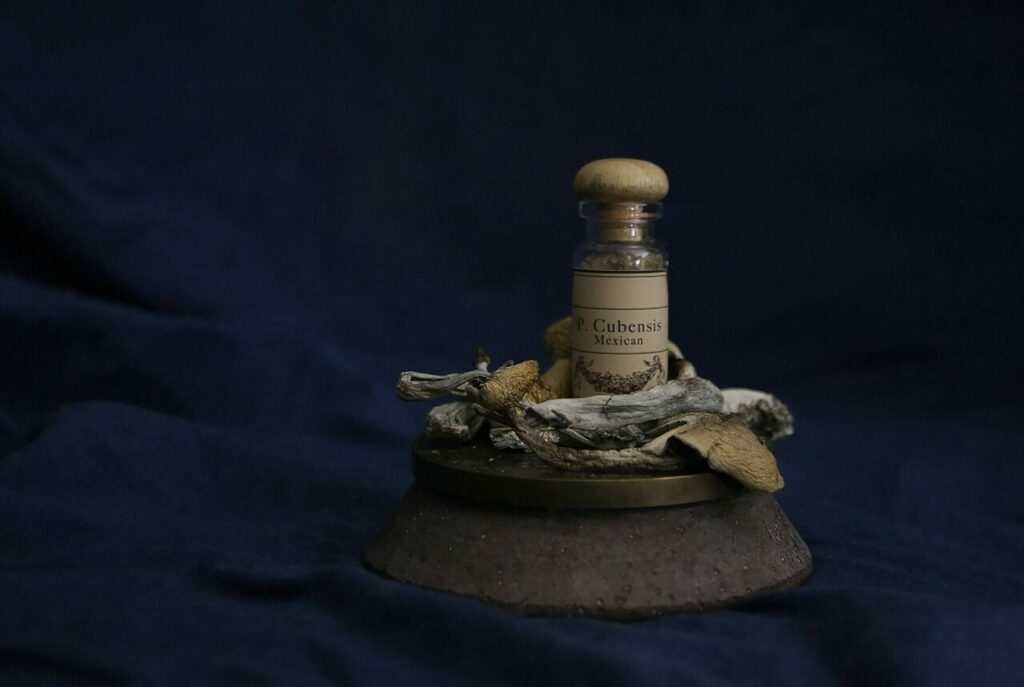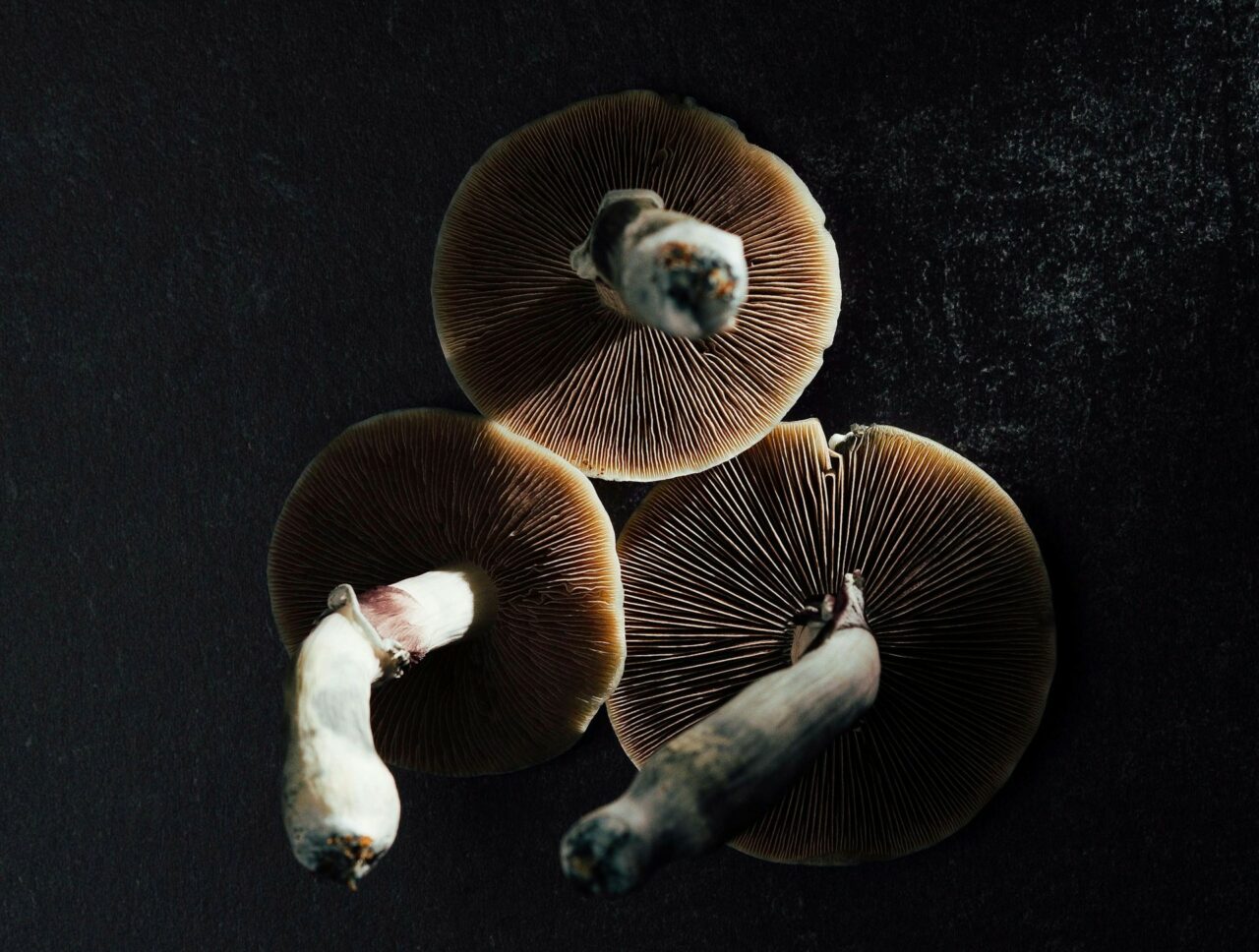With growing interest in natural magic mushrooms in Canada, the demand for laboratory-created psilocybin products is also on the rise. Many researchers favor these products for their guaranteed dosage. However, they might not be aware that natural mushrooms can have a higher potency than their lab-produced counterparts. Experts have identified several notable differences between the two, including disparate potency levels.

Key Takeaways:
- More than 180 varieties of natural mushrooms provide varying potencies, with effects determined by the species, method of ingestion, cultivation methods, and individual tolerance.
- Synthetic psilocybin, a lab-created version of the natural compound, is manufactured in controlled settings to ensure uniformity and purity for clinical research, especially in mental health therapies.
- The combined effects of different compounds in psychedelic mushrooms, such as psilocin and baeocystin, can produce a more powerful and profound experience than any single compound alone.
Expanding Market: Psychedelics in Various Forms
Psilocybin mushrooms’ popularity in Canada is increasing rapidly, particularly as a treatment for specific mental health issues such as OCD, depression, PTSD, and anxiety. In reaction to this growing interest, provincial governments are beginning to contemplate the decriminalization of recreational use.
In 2020, Canada allowed restricted medical use of these mushrooms under certain circumstances. Just a year ago, the federal government permitted specific terminally ill patients to utilize these substances to manage their symptoms.
These forward-thinking steps have sparked the emergence of synthetic psychedelics.
The Ongoing Debate
The continuous conversation about natural versus lab-engineered psychedelics focuses on safety, accessibility, and cost issues.
Many contend that natural psychedelics provide a more comprehensive and traditional experience. In contrast, supporters of lab-created versions stress their ability to be standardized for medical applications, along with guaranteed dosage control and quality checks.
While lab-manufactured psychoactive substances could enhance accessibility, there are still concerns about potential drug monopolization. Critics argue this could lead to fewer accessibility and increased expenses for users.
/wp:paragraph –>A Comprehensive Guide to Understanding Psilocybin
Psilocybe cubensis, a specific type of magic mushroom, is among the numerous natural psychedelic substances available today. Magic mushrooms, recognized for their psychoactive impact, are available in different strains such as Golden Teachers, Amazonian Cubensis, Blue Meanies, and others, with Psilocybe cubensis being the most prominent group.
Exploring the Psychedelic Process
Psilocin, a compound derived from this mushroom, converts into a different chemical when metabolized by the liver. This new substance interacts with the brain’s serotonin receptors, predominantly the 5-HT2A receptor.
This receptor is crucial for mood regulation, cognitive functions, and perception. Its interaction with the newly formed compound alters the normal functioning of serotonin pathways, leading to changes in visual and auditory perception, thought processes, and emotional states. These alterations result in an elevated mood, enhanced creativity, introspection, and the characteristic “psychedelic” experiences.
Two Main Categories
| Natural | Found in over 180 species of fungi, the strength varies depending on the mushroom species. Psilocybe cubensis is a typical variety. The effects can vary based on consumption methods, cultivation techniques, and individual tolerance. |
| Synthetic | Manufactured in labs and chemically identical to natural compounds. They are produced in controlled environments to ensure uniformity and purity. These are increasingly being explored for clinical uses, particularly in mental health treatments. |
Comparing Nature’s Offering and Science’s Invention: The Fundamental Differences
Natural variants of these substances are found in certain types of magic mushrooms. Indigenous communities in North and South America have utilized these mushrooms in their rituals and ceremonies, viewing them as sacred or divine.
- Derived from plants and mushrooms
- Utilized in ancient rituals and healing practices
- The unique genetic makeup of each strain influences its potency
On the other hand, a
Synthetic drug is A substance that closely mirrors the natural chemical structure of a specific compound. These medications are painstakingly created by experts in controlled settings to ensure precision. Despite their similarity to natural drugs, they can alter the overall psychedelic experience.
- Devised by expert pharmaceutical professionals
- Latest advancements tailored for medical uses
- Consistent potency due to the regulated manufacturing process
Natural substances provide more advantages due to their bioactive compounds. Various types of mushrooms can possess differing amounts of psilocybin and other compounds, resulting in diverse effects.
Researcher Insights
A study carried out at the Hebrew University showed that psychedelic mushrooms have a more potent and long-lasting impact on synaptic plasticity compared to their synthetic counterparts. The research team scrutinized how the drug affected the brain activity of mice by observing changes in behaviour and specific brain chemicals.
The study discovered that the extract reduced head twitches and promoted the formation of new brain connections. This suggests that the mushroom extract could provide more advantages than a single compound.
The researchers also introduced the idea of the “entourage effect”. They described it as the phenomenon where the combined effect of multiple compounds in psychedelic mushrooms could be stronger than the effects of individual compounds. In the case of mushrooms, psilocin, baeocystin, and other tryptamines may synergistically produce a profound experience.
These additional chemicals are not found in lab-produced substances, which could result in minor differences in effects, even if the psychedelic content is the same.
Expert Opinions on Nature’s Superiority
Research consistently shows that psilocybin—in all forms—yields promising results for treating a range of psychiatric disorders. A study conducted in 2024 examined the effects of controlled substances on patients with treatment-resistant depression. It recorded symptom reductions after magic mushroom administration.
When combined with other treatments, organic psychedelics may stimulate deeper emotional processing and insights during therapy sessions, thereby enhancing long-term results.
Researchers from the same university have found that hallucinogenic mushrooms boost synaptic plasticity. They possess a unique metabolic profile that influences oxidative stress and energy production pathways, unlike lab-manufactured psychedelics.
Market Impact
Canadians’ attitudes towards and buying patterns for psychedelics could be significantly influenced by the growing body of literature on this subject. Health Canada’s early programs, including the Special Access Program, are showing promising signs of legalizing and revolutionizing the therapeutic landscape. Psilocybin-assisted therapy could become a prominent treatment method in the near future.
Organic options are projected to gain increasing importance in clinical trials and therapeutic situations. As the country progresses towards fully harnessing the potential of organic psychedelics, major improvements in mental health treatments are on the horizon.
How to Obtain Shrooms in Canada Safely
- Through Section 56 Exemption: Health Canada recognizes that psilocybin might be used as an alternative treatment for patients with severe medical conditions. This exemption is part of the Controlled Drugs and Substances Act.
- Clinical Trials: Early clinical trials have been approved to study the drug’s potential in treating mental health disorders. Participants need to meet specific requirements and pass a physician’s assessment.
- Online Market: Psilocybin capsules or edibles can be purchased from online vendors in Canada. It’s crucial to ensure that these are bought from reliable sources.
Unleash the Power of Natural Compounds
Nature abounds with miracles, and shrooms are one of them. Rather than resorting to synthetic psychedelics, consider the potent, therapeutic magic mushrooms native to Canada. Experience the best, naturally sourced shroom strains at Strongest Magic Mushroom Strain Canada.
The shrooms we have available for purchase not only meet, but exceed quality standards by retaining their purest and most authentic form in dried condition. Make your purchase today for convenient and discreet delivery to your doorstep.
Frequently Asked Questions
What are baeocystin and norbaeocystin?
Both baeocystin and norbaeocystin are tryptamine or indole alkaloids. They are chemically similar to psilocybin. These tryptamine derivatives act as secondary alkaloids in shrooms, contributing to the overall psychedelic experience, although to a lesser extent. Baeocystin and Norbaeocystin have similar chemical structures but
The psychoactive effects can vary significantly.
Are organic dried mushrooms found in capsules and edibles?
There can be differences in experience based on the product’s origin. Products rich in organic compounds are often offered by online dispensaries, thus facilitating the full entourage effect. On the other hand, synthetic compounds are frequently used in capsule form in clinical trials and medical facilities.
Do natural psychedelics offer more intense experiences?
Keep in mind that expecting a profound experience from natural psychedelics could potentially lead to that very result. Our expectations, which are part of the ‘set’, can guide the journey. Natural psychedelics, often linked with ceremonial traditions, can create specially enriching experiences within this ritualistic framework. These experiences are noticeably different from those facilitated by synthetic compounds in a clinical setting.





